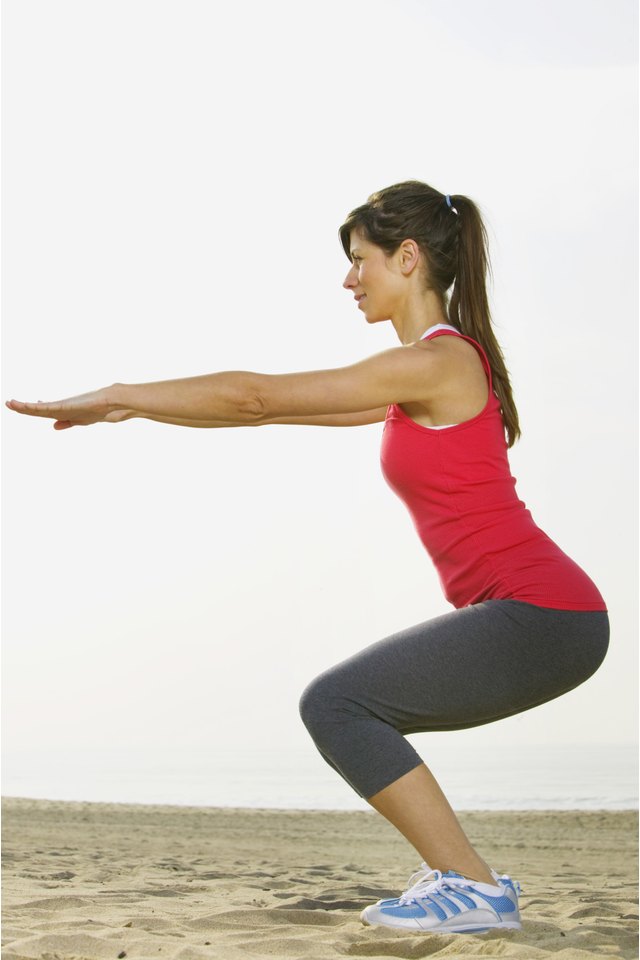Negative Effects of Squatting

Squatting is widely viewed as one of the top exercises for building overall size and strength in men. Many women perform this exercise because it is also very effective for shaping the thighs and butt. Nevertheless, some believe that squatting is dangerous or that squatting will give you a big hips. These arguments are largely overstated, and you can avoid these negative side effects if you learn how to perform this exercise correctly.
Knee Injuries
Historically, squats were associated with knee injuries. The American College of Sports medicine notes that they first earned this reputation when the United States military banned them during the 1950s and 1960s based on evidence from studies that suggested the exercise caused unstable knees. According to the ACSM, this study appears to be flawed because the subjects in one of the studies were parachutists who often faced knee stress due to their occupations. They point to more recent studies done on different populations demonstrating that the squat does not cause knee injuries.
Back Injuries
Another negative effect associated with squats is lower back injuries. This can occur when the person attempting to perform the squat is not properly conditioned or lacks the proper flexibility. Back problems can be avoided by keeping your back straight and engaging your abs and glutes during the lift. To refine this technique, you can perform the goblet squat, which is squatting while holding a weight or dumbbell with both hands, as you would a goblet, in front of your face. This will help you learn the movement pattern while keeping the stress off of your back.
Wide Hips
Many bodybuilders avoid doing squats believing that they cause wide hips due to the pressure they put on the obliques and core. This argument is largely overstated. If proper form is used, and the torso is kept upright throughout the lift, then the squat should not build your hips to an unusually large size. To be sure to avoid larger hips from squats, simply use lighter weight and stick to strict form with your torso upright and your abs engaged.
Flexibility and Stretching
Since tight hamstrings and hips will prevent you from pushing your hips back far enough to perform the squat correctly, you should regularly engage in stretching and flexibility training in these areas. Stretch your hips and hamstrings before and after every leg workout. Additionally, you should foam-roll your legs, back and hips to rid yourself of knots that may hinder your movement.
References
Writer Bio
Christopher Albert is the co-owner of a gym in Long Beach, Calif., where he also serve as head body composition specialist. He is a certified personal trainer with the National Academy of Sports Medicine and holds an M.A. in international relations from the University of Connecticut.
